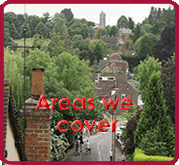
Menu:
| Tel: 01727 828415 Tel: 0844 8009171 Mob: 07903527133 |
Bricklayer in St Albans Hertfordshire
Bricket Wood - Chiswell Green -London Colney - Park Street
Radlett - Redbourne - Sandridge - St Albans – Wheathampstead
Groundworks specialist in Herts
History of St Albans Click Here
Our Services
Herts Brickwork & Groundworks are general builders. we specialise in brickwork and re-pointing but have home extensions & loft rooms and we are experts in in brick works and ground works work to all buildings, chimney repairs, pointing and re-pointing. We will be pleased to quote for your building requirements, whether it’s a home extension or a small building repair job. We pride ourselves in providing a high quality building service and complete reliability. We have extensive experience of over 10 years of all types of building work.
BRICKWORK SERVICES |
|
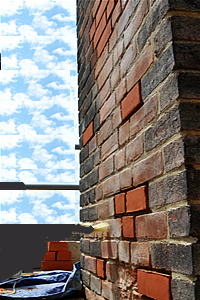 |
|
External Services |
|
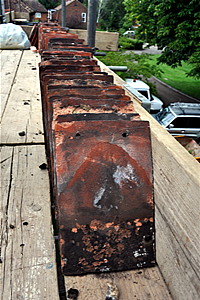 |
|
General Services |
|
 |
|
Internal Services |
|
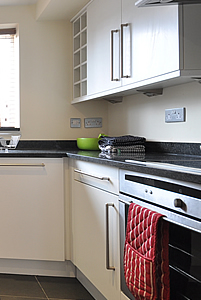 |
|
The historic city of St Albans is situated in Hertfordshire between the M25, M1 and A1(M) motorways. Nearby towns include Hatfield (6 miles), Welwyn Garden City (8 miles), and Hemel Hempstead (7 miles) St Albans has 2 train stations with St Albans City Station on the Thameslink line to London Kings Cross. The second, smaller train station is St Albans Abbey Station which links to Watford.
History
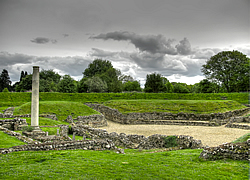
St Albans, Hertfordshire or Roman St Albans in Hertfordshire (VERULAMIUM) has records dating back to BC when the local Celtic tribe built a settlement there. In 43 AD the Romans invaded Britain. When they conquered Hertfordshire they took over the settlement and called it Verulamium. Roman St Albans was burned by Boudicca in 61AD.
The name St Alban derives from the first British Christian martyr, St Albans who was executed there in 305 AD.St Albans Hertfordshire was visited by St Germanus in 429 AD. Saxons from Germany invaded England. They arrived in St Albans Hertfordshire in the 6th century and in the 7th century St Albans Hertfordshire was converted to Christianity. An abbey dedicated to St Alban was probably founded in the late 8th century. A village grew up by the abbey and it was called St Albans in Hertfordshire.
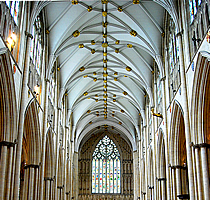 Medieval Cathedrals were the most obvious sign of the wealth of the Church in Medieval England. St Albans cathedral or the Abbey was built by master craftsmen including plumbers and many other trades in the form of stone cutters, masons, blacksmiths glass cutters.
Medieval Cathedrals were the most obvious sign of the wealth of the Church in Medieval England. St Albans cathedral or the Abbey was built by master craftsmen including plumbers and many other trades in the form of stone cutters, masons, blacksmiths glass cutters.
How were such huge buildings like St Albans in Hertfordshire built? Medieval workers worked with the most basic of tools An architect for St Albans abbey in Hertfordshire would employ the best master craftsmen and many highly skilled men were needed
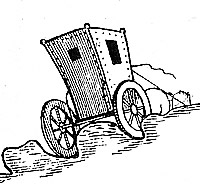 In the middle of the 10th century an abbot decided to enlarge St Albans in Hertfordshire and develop it into a town. St Albans lay near the old Roman road of Watling Street. In the 10th century an abbot closed Watling Street and diverted traffic through the town so more people spent their money there.
In the middle of the 10th century an abbot decided to enlarge St Albans in Hertfordshire and develop it into a town. St Albans lay near the old Roman road of Watling Street. In the 10th century an abbot closed Watling Street and diverted traffic through the town so more people spent their money there.
At the time of the Domesday Book (1086) St Albans in Hertfordshire had a population of about 500. St Albans in Hertfordshire grew larger. By the 14th century it may have had a population of around 1,300.In 1077 the new Norman abbot demolished the old St Albans abbey in Hertfordshire and rebuilt it.
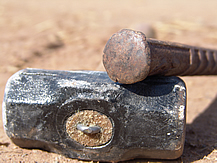
The new building was consecrated in 1136. In the Middle
Ages there were the same craftsmen in St Albans in Hertfordshire that found in any Medieval town, like butchers, bakers, carpenters, plumbers and blacksmiths.
The main industry in St Albans in Hertfordshire was the manufacture of woollen cloth. The people of St Albans in Hertfordshire were obliged to grind their grain to flour in the abbot's watermills. Again they resented this and wished to use handmills in their own homes in St Albans in Hertfordshire.
Most of all the people of St Albans in Hertfordshire wanted independence and resented being ruled by the abbot and his agents. Fairs in St Albans in Hertfordshire would attract buyers and sellers from all over Hertfordshire and from London.
During the civil wars in the 15th century there were 2 battles at St Albans in Hertfordshire. The two battles at St Albans in Hertfordshire were in 1455 and 1461.
In 1539 Henry VIII closed St Albans abbey in Hertfordshire. St Albans in Herts gained its first charter in 1553. (A charter was a document granting the townspeople certain rights. In this case St Albans in Herts it was given a mayor and corporation and its independence).In 1604 St Albans suffered an outbreak of plague.
Then in 1642 came civil war between king and parliament. In 1643 the High Sheriff of Hertfordshire entered the Market Place with troops and called on the men of the town to join the king. However some troops led by Oliver Cromwell attacked and they fought in St Albans High Street. St Albans in Hertfordshire remained in parliamentary hands for the rest of the war but the townspeople of St Albans in Hertfordshire built earthwork defences around the town.
In the 18th century St Albans in Hertfordshire remained a small market town with a population of perhaps 3,500. Many stagecoaches passed through St Albans in Hertfordshire every day and there were several inns.
In 1796 London Road was rebuilt to facilitate traffic. At the beginning of the 19th century the population of St Albans in Hertfordshire was less than 4,000 but it quadrupled by 1900. In 1802 a silk mill opened in St Albans in Hertfordshire. In 1822 St Albans in Hertfordshire gained gas street lighting. In the early 1830s St Albans in Hertfordshire gained a piped water supply but no sewers they were not built until the 1880s.In 1877 St Albans in Hertfordshire became a city.
St Albans in Hertfordshire was linked to London by train from 1869. The boundaries of St Albans in Hertfordshire were extended in 1835 and 1879.
The cinema in St Albans in Hertfordshire was built in 1907. The first buses began running in 1906. In the 1920s the first council houses were built in St Albans in Hertfordshire.
A new civic centre was opened in St Albans in Hertfordshire in 1961. The Abbey theatre in St Albans in Hertfordshire opened in 1968. The Maltings shopping centre in St Albans in Hertfordshire opened in 1988. A new Crown Court in St Albans in Hertfordshire was built in 1993. Today the population of St Albans in Hertfordshire is 67,000.
Above information sourced from various local history sites with special thanks to Wikipedia
Please find links for Local History Websites for St Albans
The Society was formed in 1845 to promote an interest in local history, and to encourage research and its publication. Through this website we hope to present the aims, objectives, activities and resources of the society to a wider audience, and to provide a medium for those who have historical research they wish to contribute.
Villages In Hertfordshire
Abbots Langley - Adeyfield - Albury End – Albury - Aldbury - Aldenham - Allen's Green – Amwell - Ansells End – Anstey –Ardeley – Ashwell - Aspenden - Aston End – Aston - Astrope - Ayot Green - Ayot St Lawrence - Ayot St Peter - Babbs Green - Bakers End - Ballingdon Bottom – Barkway -Barley - Barleycroft End – Batchworth – Batford – Bayford – Beane –Bedmond - Bell Bar - Belsize – Benington - Bennetts End - Berkhamsted - Bishop's Stortford -Bourne End – Bovingdon - Bower Heath – Boxmoor - Bozen Green - Bragbury End – Bramfield – Braughing - Braughing Friars - Brent Pelham – Brickendon - Bricket Wood - Brookmans Park –Broxbourne – Buntingford – Bushey –Buckland - Bygrave
Caldecote - Chapmore End – Charlton – Chaulden - Cherry Green – Chipperfield - Chiswell Green – Clothall - Codicote -Colney Heath - Colney Street - Croxley Green – Cuffley - Dane End – Datchworth – Digswell – Eastbury –Elstree -.Essendon – Felden - Fields End – Flamstead – Flaunden – Frithsden - Furneux Pelham
Garston – Gilston - Goffs Oak – Gosmore – Graveley - Great Amwell - Great Gaddesden - Great Hormead - Great Munden - Great Wymondley – Heronsgate - Hertford Heath – Hertingfordbury – Hexton - High Wych – Highfield – Hinxworth – Holwell -How Wood - Hunsdon - Hunton Bridge –Ickleford - Jersey Farm
Kelshall – Kimpton - King's Walden - Kings Langley - Kinsbourne Green – Knebworth – Langley – Lemsford - Letchmore Heath - Leverstock Green – Lilley - Little Berkhamsted - Little Gaddesden - Little Hadham - Little Hormead - Little Wymondley - London Colney - Long Marston – Loudwater
Maple Cross – Markyate – Meesden - Moor Park - Much Hadham - Napsbury - Napsbury Park - Nash Mills – Nettleden -Newgate Street – Newnham - North Mymms - Northaw - Norton – Nuthampstead – Oaklands - .Offley - Old Hall Green
Old Hatfield - Old Knebworth
Park Street - Piccotts End – Pirton - Potten End – Preston – Puckeridge – Puttenham –Radlett – Radwell – Redbourn –Reed– Rickmansworth –Ridge – Ringshall - Rush Green – Rushden – Sacombe - Sacombe Green - St Ippolyts - St Paul's Walden – Sawbridgeworth - South Oxhey – Spellbrook - Sandon – Sandridge – Sarratt – Shenley - South Mimms - St Stephens – Standon - Stanstead Abbotts - Stanstead St Margarets – Stapleford - Stocking Pelham
Tewin - Therfield – Thorley – Thundridge – Tonwell –Walkern – Walsworth- Waltham Cross – Wareside - Warner's End – Waterford – Watford - Watton-at-Stone - Welham Green -Well End - Wellpond Green – Welwyn – Westmill – Weston - Westwick Row –Wheathampstead – Whitwell – Widford – Wigginton - Willian – Wilstone – Woollensbrook - Woolmer Green – Wormley -Wyddial
History of St Albans Click Here
Our Services
Herts Brickwork & Groundworks are general builders. we specialise in brickwork and Groundworks but have experience in home extensions & loft Conversions. We can provide all bricklaying services including House builds, walls, chimney repairs, pointing and re-pointing. We will be pleased to quote for your building requirements, a high quality building service and complete reliability. We have extensive experience of over 10 years of all types of building work.
BRICKWORK SERVICES |
|
 |
|
Groundworks |
|
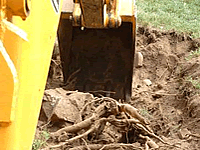 |
|
Herts Brickwork & Groundworks are general builders
Over 10 years experience of all types of building work.



